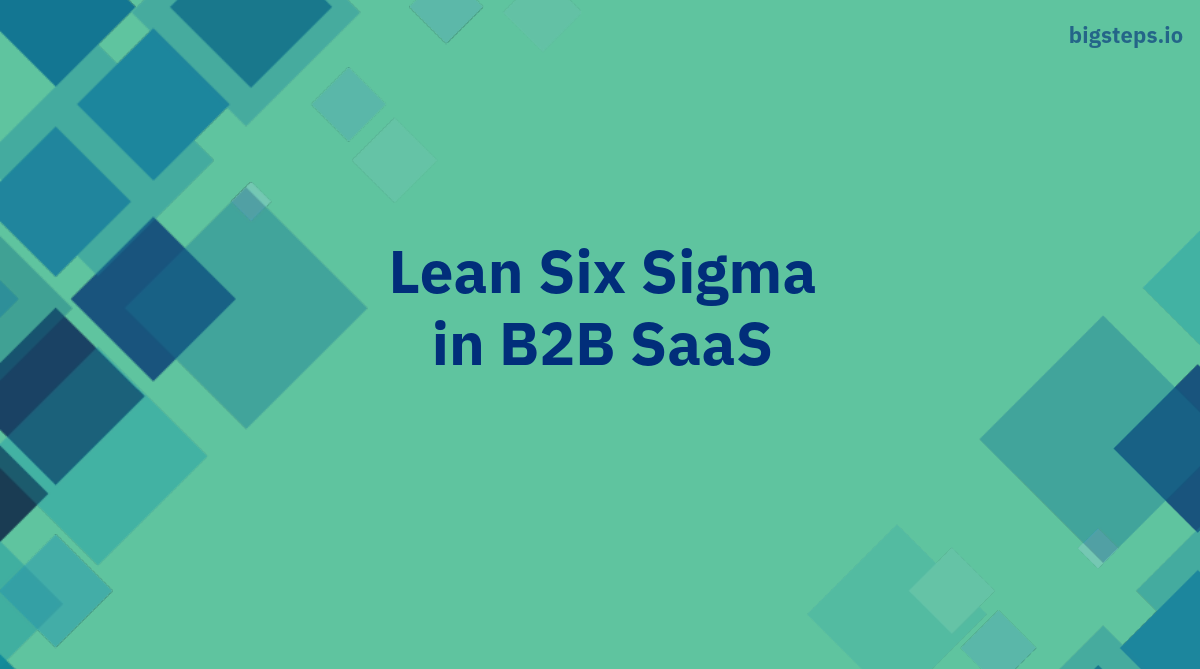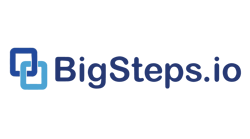Lean Six Sigma in B2B SaaS : Do more with less
Read Time 6 mins | Written by: Vaibhav Awachat

Step into the workings of a thriving SaaS venture, and you'll find an unsung hero quietly shaping its success path - Quality Control. Unlike a conventional product that gets manufactured, packaged, and shipped, a SaaS offering is alive, constantly evolving, and improving, often in real-time. This constant evolution means that a laser focus on quality control is vital. High-quality experiences shape customer satisfaction, reduce bugs, and drive significant cost savings — underlining the indispensable role of quality-first orientation in SaaS.
Demystifying Lean Six Sigma in SaaS
In our experience with process improvement, we find Lean Six Sigma to be a powerful fusion of 'Lean' and 'Six Sigma,' two methodologies that on their own have a significant impact but when combined, demonstrate an amplified effect.
'Lean,' initially derived from Lean Enterprise, is a framework that aims to provide a smooth, optimized process that delivers value to the customer, while meticulously eliminating waste. In a nutshell, Lean asks, "Can we make the process more efficient?"
On the other hand, is 'Six Sigma,' a data-driven methodology focused on reducing process variation and improving process control. It identifies and eliminates inconsistencies, defects and errors. Essentially, Six Sigma is all about asking, "Can we make the process more effective?"
Now, in merging these two methodologies, you get Lean Six Sigma. It's a strategy that not only seeks efficiency but effectiveness as well. It combines the strengths of each approach: Lean’s speed and agility to eliminate process-waste, with Six Sigma's stability and control to minimize process variation.
Lean Six Sigma is not about choosing between fast or flawless; it is about being fast and flawless. It bridges the gap between the need for speed in delivery and the demand for zero-defect products and services. In essence, Lean Six Sigma is the strategy that drives a business towards operational excellence - delivering more value to the customers, at a lower cost, at a higher speed, and with utmost precision.
At BigSteps, we know first-hand the power of Lean Six Sigma. We've not only studied it, but we've implemented its philosophies within our own operations in our pursuit to build the world's No.1 customer onboarding software. Just like Lean Six Sigma revolutionizes processes, we're revolutionizing the customer onboarding experience for millions of businesses. But let's delve into what Lean Six Sigma really is.
Experience-driven Principles of Lean Six Sigma
In a B2B SaaS environment, Lean Six Sigma principles bring about a shift in perspective. Here are a few of these principles that I've seen making a big difference firsthand:
- Focus on the Customer: Understanding the customer's needs and tailoring solutions to meet these requirements gets top priority.
- Identify and Remove Waste: Anything that doesn't add value for the end customer is seen as waste. Their elimination or reduction optimizes resources.
- Map and Flow the Value Stream: Every action, whether value-add or non-value-add, is listed and arranged sequentially as the product progresses from start to finish.
- Let the Customer Pull Value: Produce only what the customer needs, preventing overproduction.
- Pursue Perfection through Continuous Improvement: Consistently analyze and improve processes to maintain high-quality levels.
Did You Know? Lean Six Sigma is already at play in your Project Management!
While you navigate your daily tasks in project management within a B2B SaaS setting, you might not realize that you are already using techniques from Lean Six Sigma called Kanban boards. Kanban boards are excellent for visualizing the flow of work, limiting work in progress and identifying roadblocks, which makes your process run smoother and faster.
But Kanban is just one part of the jigsaw.
The Kaizen approach also fits neatly into SaaS. Kaizen promotes a culture of continuous, incremental improvement and is all about engaging every team member in enhancing the work environment and processes. Imagine a development team consistently seeking better code efficiency or a sales team, improving by continuously assessing its processes in customer engagement.
Another technique is Value stream mapping, which involves analyzing the current state and designing a future state for the series of events that a product or service undergoes from start to finish. In SaaS, this could mean mapping out the entire journey of software development, right from initial design concepts to the final software delivery, with a goal to root out waste from the process.
Finally, the 5S tool—Sort, Set in order, Shine, Standardize, and Sustain—is a method used to create a productive work environment. It's about having a specific place for everything (like code libraries or cloud resources), keeping the workplace neat and orderly (both physical and virtual), and maintaining cleanliness in operations (like clean, efficient code or clear documentation).
In essence, these techniques from Lean Six Sigma, when thoughtfully adapted into the B2B SaaS industry, can have a transformative impact on optimizing processes, improving productivity, and ensuring the highest level of customer satisfaction.
As part of our mission to streamline customer onboarding at scale, at BigSteps, we embody these techniques. We actively use tools like Kanban in our project management and believe in continual improvement through the Kaizen approach. These philosophies have been instrumental in empowering us to design frictionless onboarding experiences for our customers.
A Walk-through of Benefits
Applying Lean Six Sigma to B2B SaaS can manifest substantial benefits by enhancing operational processes and driving critical metrics to new heights. Here are a few specific scenarios:
Enhancing Product Adoption through Improved Customer Onboarding:
One of the most challenging aspects in SaaS companies is enabling users to fully utilize their products. Specifically, customer onboarding has a significant role to play in the early product adoption stages.
Suppose the product adoption rates are low as users are not finding value in certain features. In this case, Lean Six Sigma come to the rescue by applying its principles to the onboarding process to make it more efficient. For example, using process mapping to identify and reduce process wastes can make onboarding faster and smoother, ultimately empowering users to quickly learn and leverage the advanced features of the product. Further, Six Sigma analysis could provide insights from customer feedback to make the right adjustments.
Over time, a more efficient onboarding could increase product adoption rates from 40% to over 65%.
Boosting Conversion Rates:
Lean Six Sigma can be employed to optimize the marketing and sales processes, thereby increasing conversion rates. By eliminating unnecessary tasks and focusing on the most lucrative leads, Lean Six Sigma effectively improves resource allocation. The result is a more efficient and effective sales funnel leading to a considerable improvement in the conversion ratio.
For instance, a more engaged sales team could improve conversion ratio by 20%.
Improving Net Revenue Retention (NRR) and Customer Retention:
Applying Lean Six Sigma to customer service and relationship management can have a dramatic positive impact.
For instance, in a situation where high customer churn rate is a problem, Six Sigma analysis identify why churn is happening. Lean processes then reduce waste, improving the overall efficiency of the support service. This improvement lead to a decline in customer churn and could promote upselling and cross-selling. Hence, boosting NRR.
For example, reduced churn rate by 15% due to improved customer service could impact the annually recurring revenue significantly, bolstering the company's profitability.
Turning the Page
To truly stand out in a crowded SaaS market, businesses must go the extra mile to ensure not just top-tier product offerings but also superior customer experience and highly optimized business processes - This is where Lean Six Sigma can play a strategic role.
Lean Six Sigma is not just about improving operational efficiency and quality, but about creating a culture of continuous improvement and taking calculated steps towards business excellence.
As decision-makers, the question isn't whether or not to implement Lean Six Sigma, but how effectively and quickly you can do it. The most successful businesses of the future will be those that look at Lean Six Sigma not as an option, but as a necessity in their relentless pursuit for perfection. It's a journey of transformation that begins with the first step today.
So if you've been unknowingly using Lean Six Sigma techniques in your SaaS operations, imagine the progress when you integrate them consciously and consistently! At BigSteps, we're immensely proud to build upon these principles and extend their benefits to the very core of our product. Why not take a step towards better customer onboarding with us?
